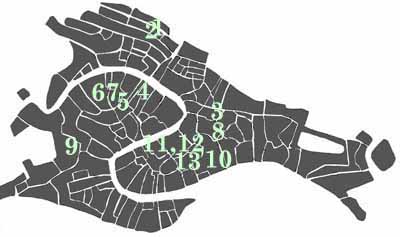
|
1. Window detail, Madonna dell'Orto, Cannaregio
2. Palazzo Mastelli, Campo dei Mori, Cannaregio
3. Palazzo Zacco, Rio di S. Marina, Castello
4. Palazzo Agnus Dio, from Rio Pesaro
5. St. George relief in Calle del Mezzo, S. Giacomo dall'Orio, Santa Croce
6. Relief, Campiello di Piovan, S. Giacomo dall'Orio, Santa Croce
7. Relief, Campiello di Piovan, S. Giacomo dall'Orio, Santa Croce
8. Madonna tympanum, Calle Paradiso, Castello
9. Stone grille, Corte del Gallo, Rio del Malcanton, Dorsoduro
10. Porta della Carta, Palazzo Ducale
11. Campiello della Chiesa, near S. Luca, San Marco
12. Campiello della Chiesa, near S. Luca, San Marco
13. Courtyard, Piscina di Frezzaria, San Marco
|
|
|
|
|
1. Window detail, Madonna dell’Orto, Cannaregio
This is typical of Venetian Gothic work. Although this is a standard Gothic arch, it is finished in a typically Venetian manner, with striped red and white edging, and an elaborate mixture of quatrefoil and trefoil tracery work.
|
|  |
|
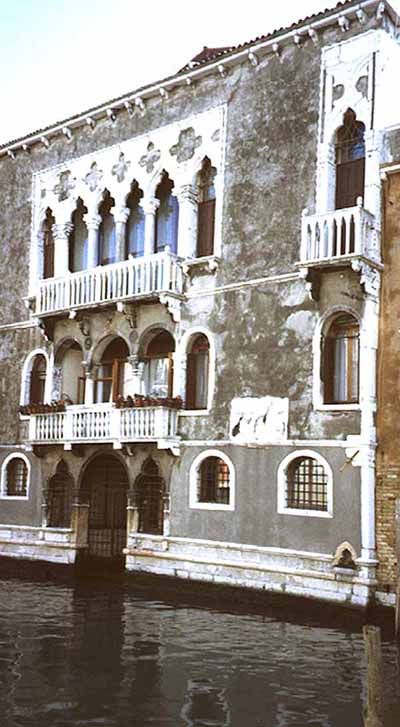 |
|
2. Palazzo Mastelli (House of the Camel), Campo dei Mori, Cannaregio
The story about this house goes that a foreign merchant settled in Venice. It was only some years later, after he became established, that he sent for his wife, telling her in his message that she would know the house because of the relief of a camel that had been inset into the wall (above ground floor, to right of balcony).
|
|
|
3. Palazzo Zacco, Rio di S. Marina, Castello
A floriated Gothic balcony.
|
| 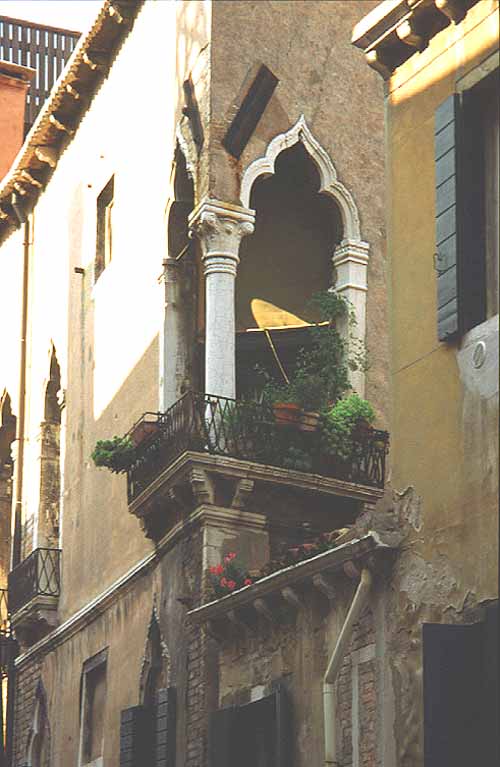
|
|
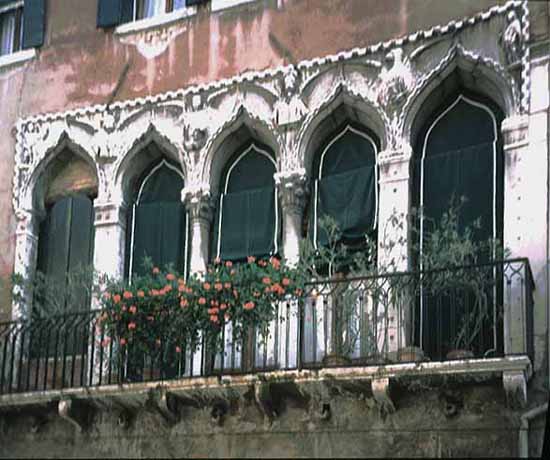
|
|
4. Palazzo Agnus Dio, from Rio Pesaro
The five-light window is decorated with the symbols of the four Evangelists: Matthew, Mark, Luke and John, dating from the mid-14th century.
|
|
|
5. St. George relief in Calle del Mezzo, S. Giacomo dall'Orio, Santa Croce
Many people spend their time counting the number of lions that they see in Venice. I found that you could have an equally good time locating reliefs of St. George slaying the dragon. The quality varies enormously; at the upper end is the stunning relief over the Scuoli di S. Giorgio degli Schivone in the Castello, whose patron saint is St. George. The relief here, found inside a sottoportego, is of average quality or below.
|
|
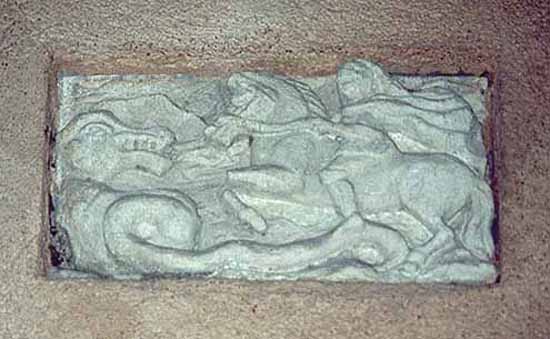 |
|
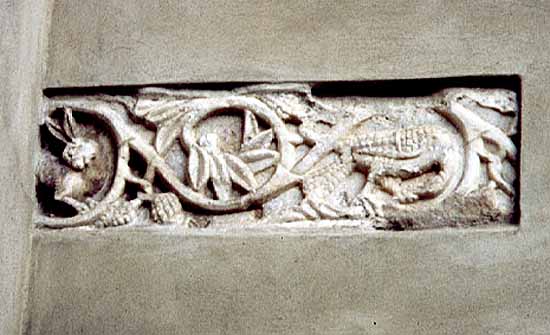
|
|
6. Relief, Campiello di Piovan, S. Giacomo dall'Orio, Santa Croce
This relief, like the one following, is set into a wall in a small campiello behind the church of San Giacomo dall'Orio.
|
|
|
7. Relief, Campiello di Piovan, S. Giacomo dall'Orio, Santa Croce
Reliefs such as these are at least as likely to have be of foreign origin as native. Many Venetians, particularly in the Sack of Constantinople, brought back architectural booty from foreign campaigns and merchant trips; such works were incorporated into existing or new construction, sometimes in a very haphazard manner. In the present case, multiple reliefs were set randomly into a stucco wall. This particular interlaced example is likely to be of Arabic influence or manufacture.
|
| 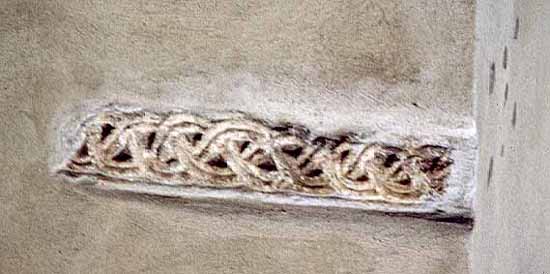 |
|
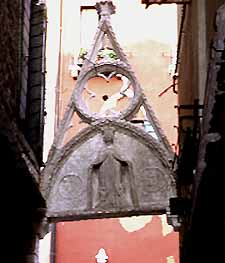 |
|
8. Madonna tympanum, Calle Paradiso, Castello
This stone tympanum with a Madonna is a visual punctuation to a narrow calle off the Salizzada San Lio in one of the oldest areas of the city. |
|
|
9. Stone grille, Corte del Gallo, Rio del Malcanton, Dorsoduro
The glass is a later addition.
|
|
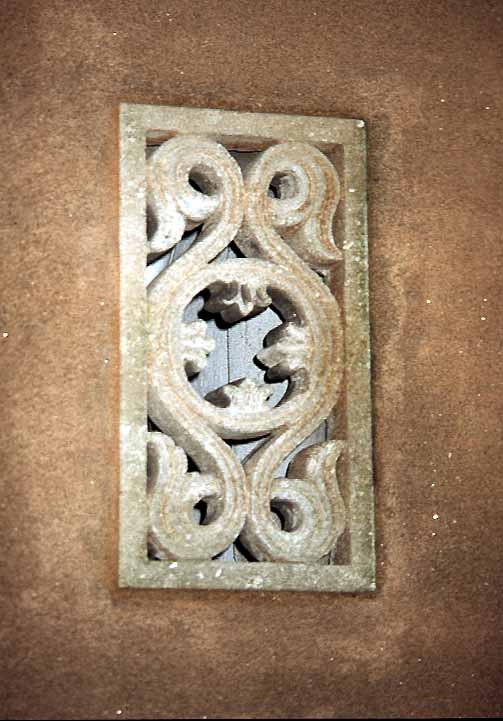 |
|
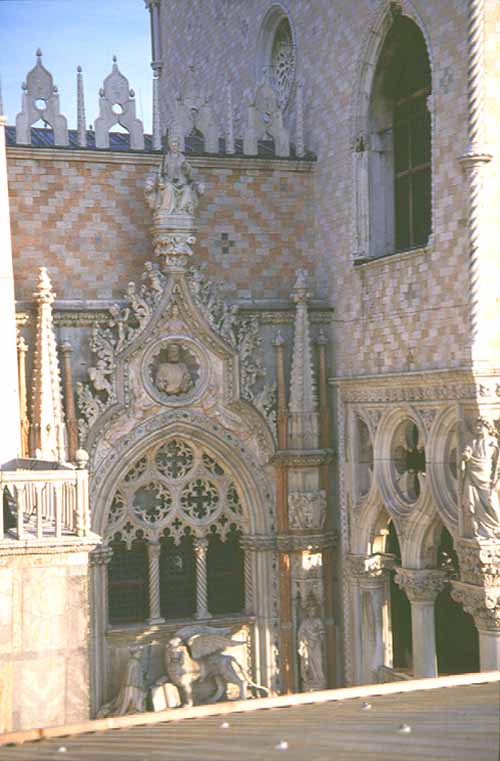 |
|
10. Porta della Carta, Palazzo Ducale
This mid-fifteenth century work, joing the Basilica San Marco to the Doges' Palace, is one of the most elaborate late Venetian Gothic sculptural works. It tops a public entrance into the Palazzo's courtyard. The sculptures, executed c. 1440 by Giovanni Bon and his son Bartolomeo, include Venice as Justice on the pinnacle, with a medallion of St. Mark above the window. Below the window is a sculpture of Doge Francesco Foscari kneeling before the lion of St. Mark; this sculpture is a modern replica, as the original was destroyed by the French at the end of the 18th century.
|
|
|
11. Campiello della Chiesa, near S. Luca, San Marco
An unusual brickwork-filled gable, dating from the 12th century. In the center is a relief of two kissing peacocks.
|
|
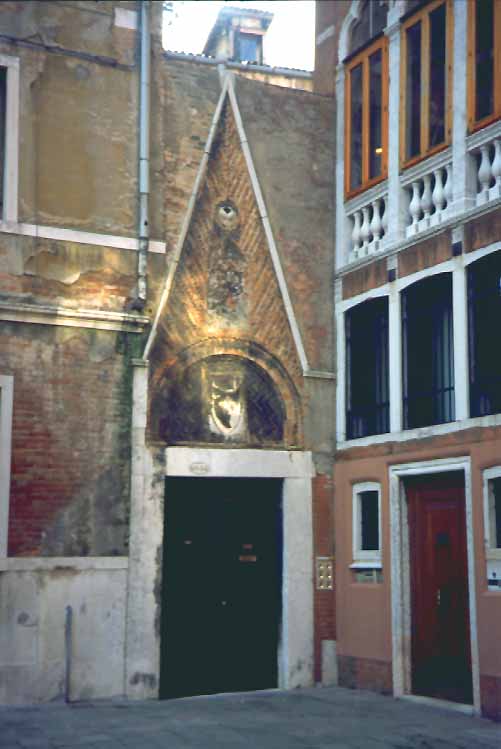 |
|
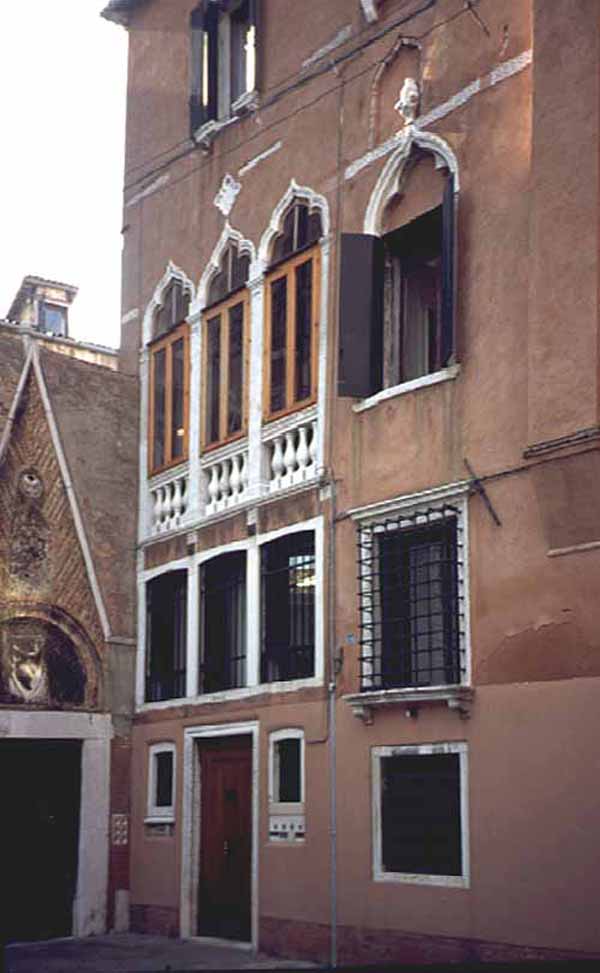 |
|
12. Campiello della Chiesa, near S. Luca, San Marco
Next to the gable in the preceding picture, an unusual facade. The space between the ground floor and the piano nobile is filled by mezzanine windows whose spacing echoes that of the elaborate grouping above them.
|
|
|
13. House join, courtyard, Piscina di Frezzaria, San Marco
Not strictly trim, but certainly an unusual architectural detail.
|
|
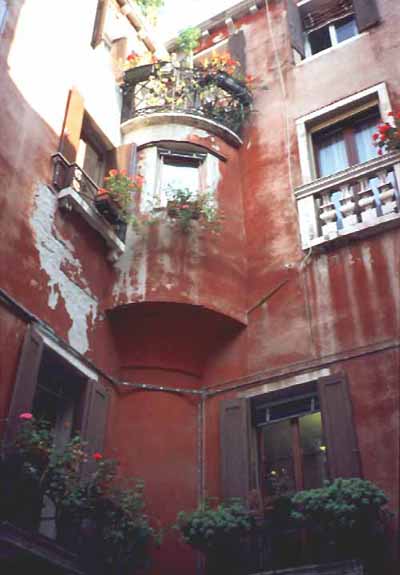 |















